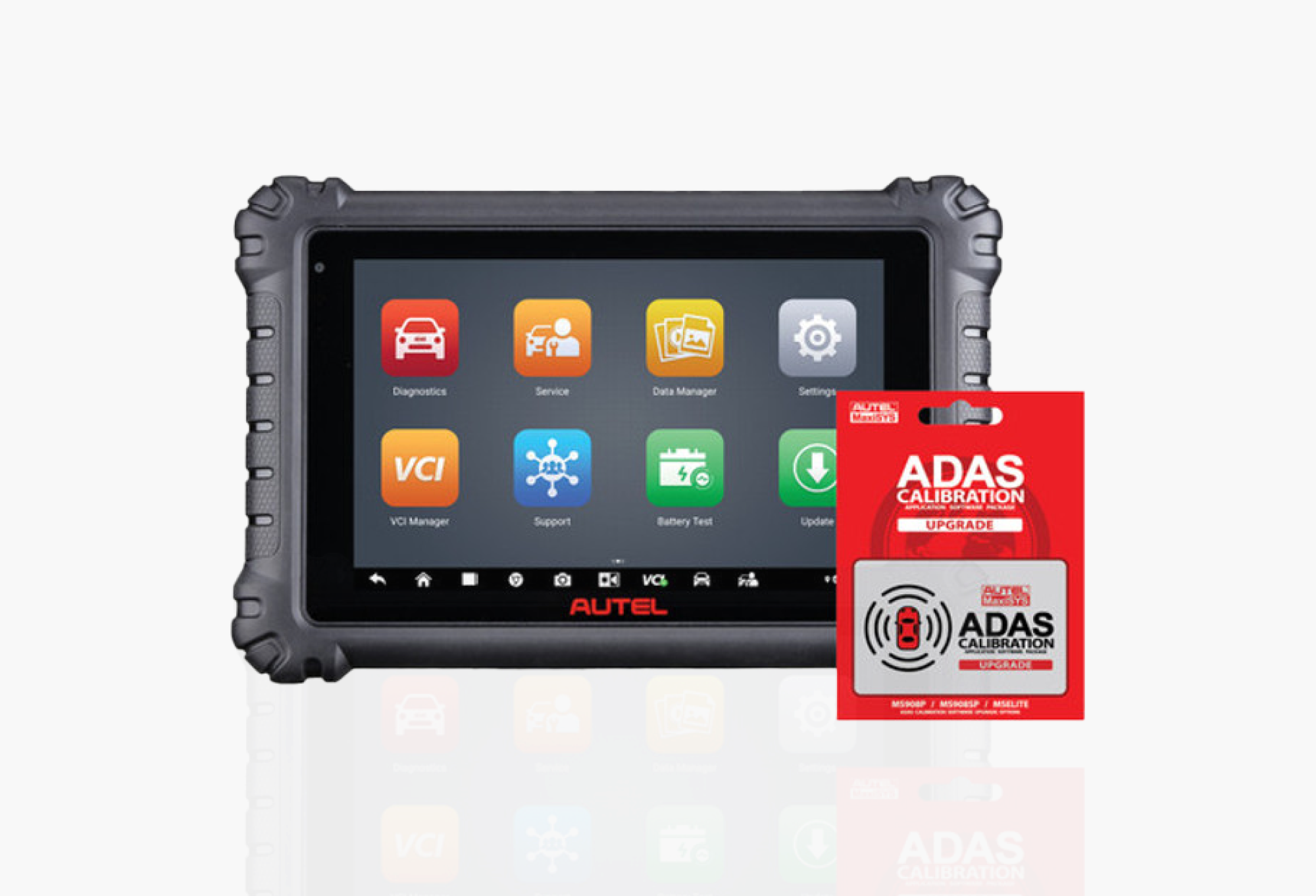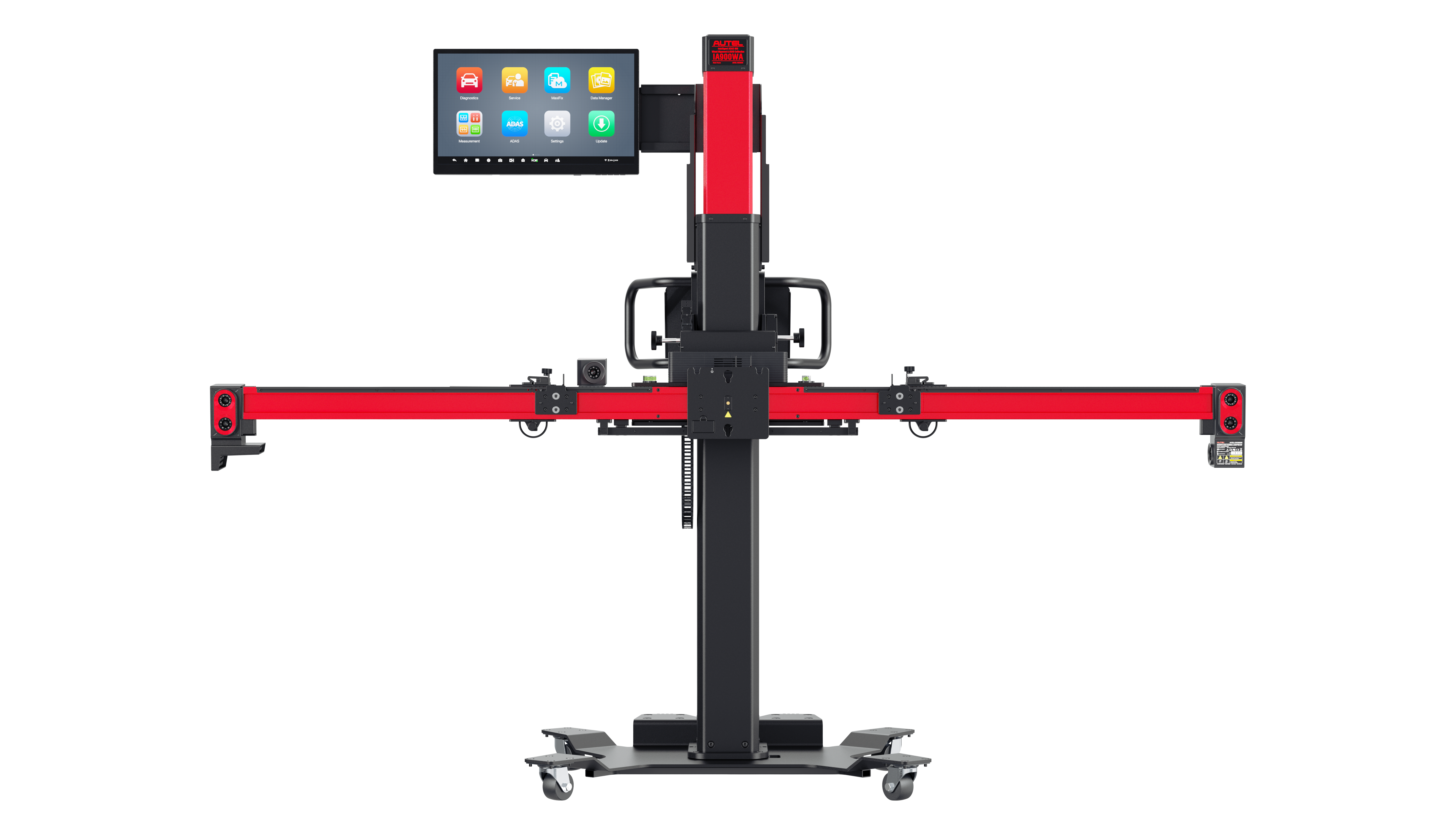We get many questions from people interested in ADAS calibrations such as:
- "What diagnostic tablet should I get?"
- "What calibration frame package would be best for me?"
- "What's the difference between a static and dynamic calibration?"
One of the biggest roadblocks to ADAS calibrations is accessing the right equipment for the diverse needs of different shops. The types of calibrations and targets required for a collision shop will be different from an autoglass specialist, which will be different than a shop that specializes in select OEMs.
Let ADAS Depot take away all the guess work and help guide you towards the best calibration package for your needs. Let's break down the essential equipment you need into four main categories:
Diagnostic Tablets
The tablet is the brains of your calibration business. The software on this machine is what gives you access to deep diagnostic and calibration capabilities. The software will have the procedures loaded and ready to guide you through calibrations step-by-step. They generate the pre/post scan reports that will document modules and systems that need to be addressed and then display which modules were resolves or repaired, including ADAS calibrations.
Key considerations for choosing a tablet:
1. What is your budget?
2. What type of frame and targets will you be using?
3. Do you need to program / flash modules?
4. What other procedures do you need to do? (eg. wheel alignment)
Calibration Frame
Your calibration frame is the essential equipment that helps place your targets in the right space and orientation. The frame you choose will determine your workflow, accuracy, and location.
Key considerations for choosing a frame:
1. What is your budget?
2. Do you need to be mobile?
3. How many calibrations do you need to do per day/week/month?
Calibration Targets and Plates
The targets and plates are the components which interact with the ADAS modules such as cameras and radars. They provide feedback to the modules to tell them whether they are functioning and aimed properly.
Key considerations for choosing targets:
1. What makes/models do you typically work on?
2. What kinds of ADAS modules do you want to calibrate?
FAQs
Q: Why should I care about ADAS?
According to a study conducted by the AAA foundation, ADAS technologies could potentially prevent more than 2.7 million crashes, 1.1 million injuries and nearly 9,500 deaths each year. By 2050, 75% of new cars will be equipped with ADAS. This is a quickly growing space; more and more, collision repair and tire shops have realized that they should perform calibrations in-house instead of subletting the work.
Q: I’ve considered, but hesitate to invest in ADAS equipment. Why should I get into it?
We encourage you to check out Autel's pricing calculator. Depending on service volumes, investing in an ADAS system and performing calibrations in-house can pay itself off within 30 days. It's a great time to get into ADAS: as more and more cars ship with the technology, your expertise in performing calibrations will only become more valuable.
Q: Is this something anyone can learn to do?
Absolutely! While it helps to have an automotive background, anyone with a keen interest in vehicles and ADAS will have the ability to become an ADAS technician. The process for calibrating a car is genuinely quite straightforward - you pop in the VIN for the vehicle and the Autel tablet will guide you through the calibration process for each make and model. However, it helps to have experience in automotive repair and electronics. For example, a vehicle failing to calibrate may show a specific fault code, and it's up to the technician to do a deep dive. It might be an electrical wire that is shorting, or it could also be a faulty camera module; having that experience can be valuable.
We recommend taking or sending your technicians to Autel's 2-day comprehensive training. This course is intended for current and future owners of Autel ADAS calibration equipment. It sells out quickly and is a great value. They provide training on ADAS cameras, sensors, systems, and their functions; best practices, pre/post scanning, calibration workflow, wheel alignments etc.
Hotel accommodations and food are included. Transportation between the Autel training facility and the hotel are also included.
Q: How much space is required for calibrations?
In an alignment bay, 97% of all Forward Facing Calibrations can be performed with as little as 10 feet in front of a lift by repositioning either the calibration frame or the vehicle on the rack. This also applies to glass related calibrations.
In a typical repair shop bay, 88% of all ADAS Calibrations can be performed in a conventional 30’ x 16’ repair shop bay by repositioning the vehicle.
Although the ideal floorspace for all systems ADAS calibration is a recommended 45’ x 30’, a space that large is not required. 98% of All ADAS Calibrations can be performed within a 34’ x 24’ area by repositioning the vehicle.
Q: I’m a collision center/body shop/tire center/glass shop. My needs for ADAS are specific.
Check out our complete packages page which details the different types of ADAS Calibration systems and their use-cases.
Q: What is the difference between stationary and mobile calibration frames?
This blog post details the differences between stationary and mobile ADAS calibration frames.
Q: Do you offer financing?
Yes. Financing might be a great option for your business, and is particularly useful for companies that may not have the immediate cash reserves to make a large equipment purchase. With financing, you gain an upper hand by acquiring equipment quickly, and you can be one of the first to offer ADAS calibrations in your area.
If you have any questions with financing, please feel free to call or email us.
If you want to apply for financing, click here: ADAS Depot Financing Application



